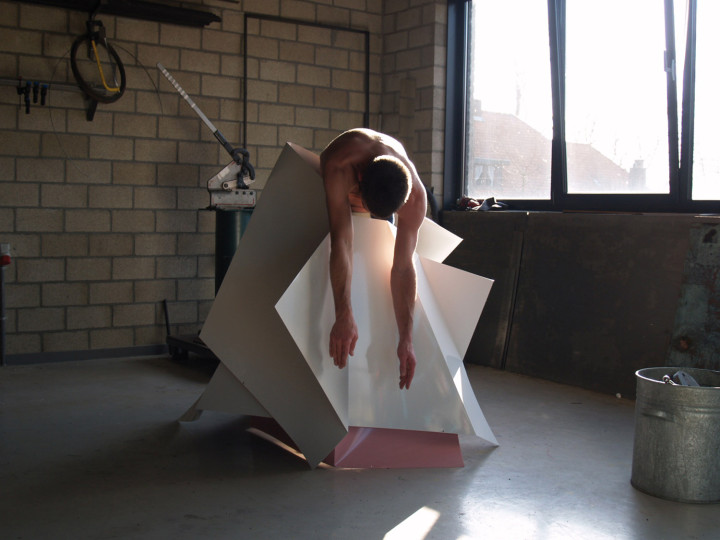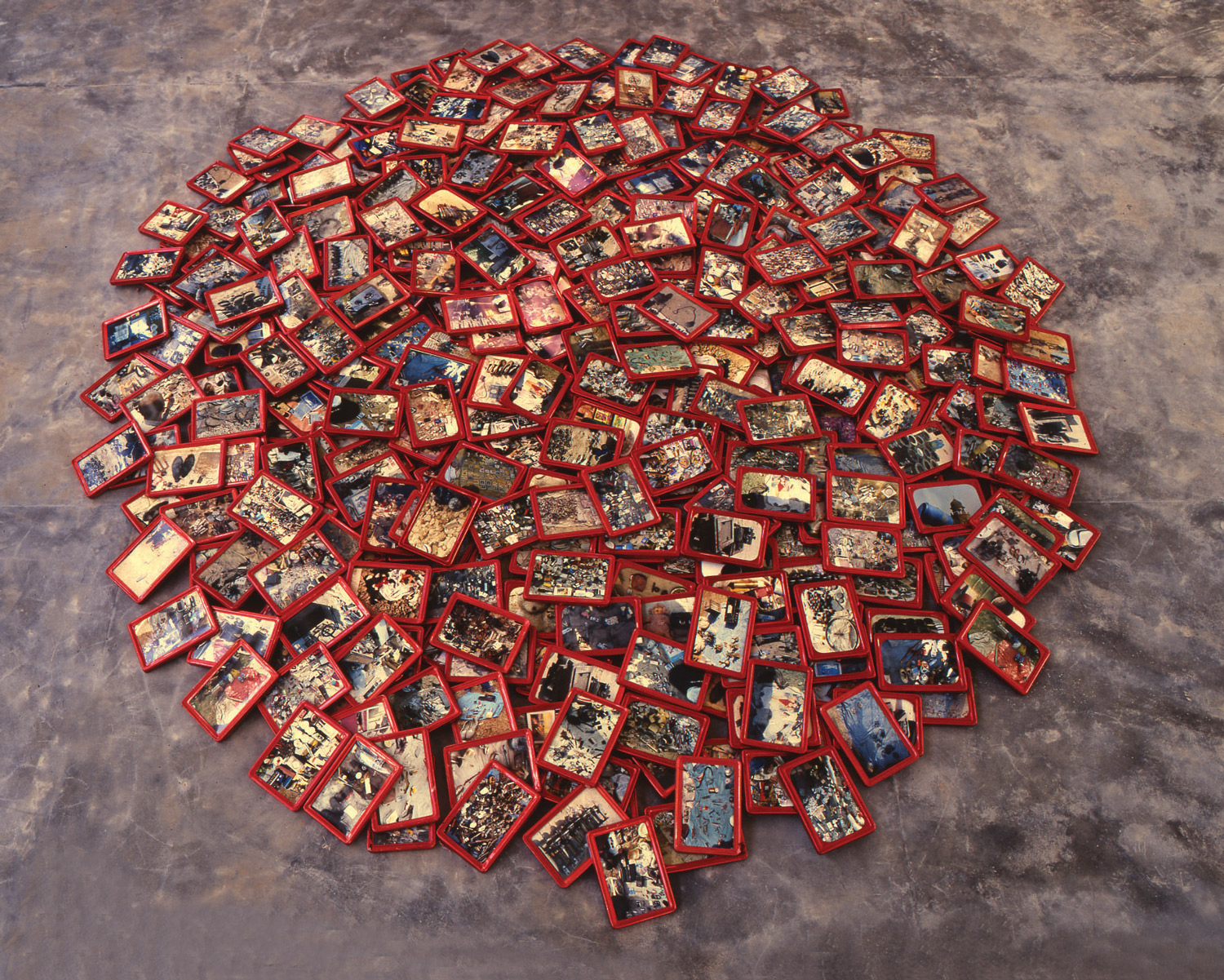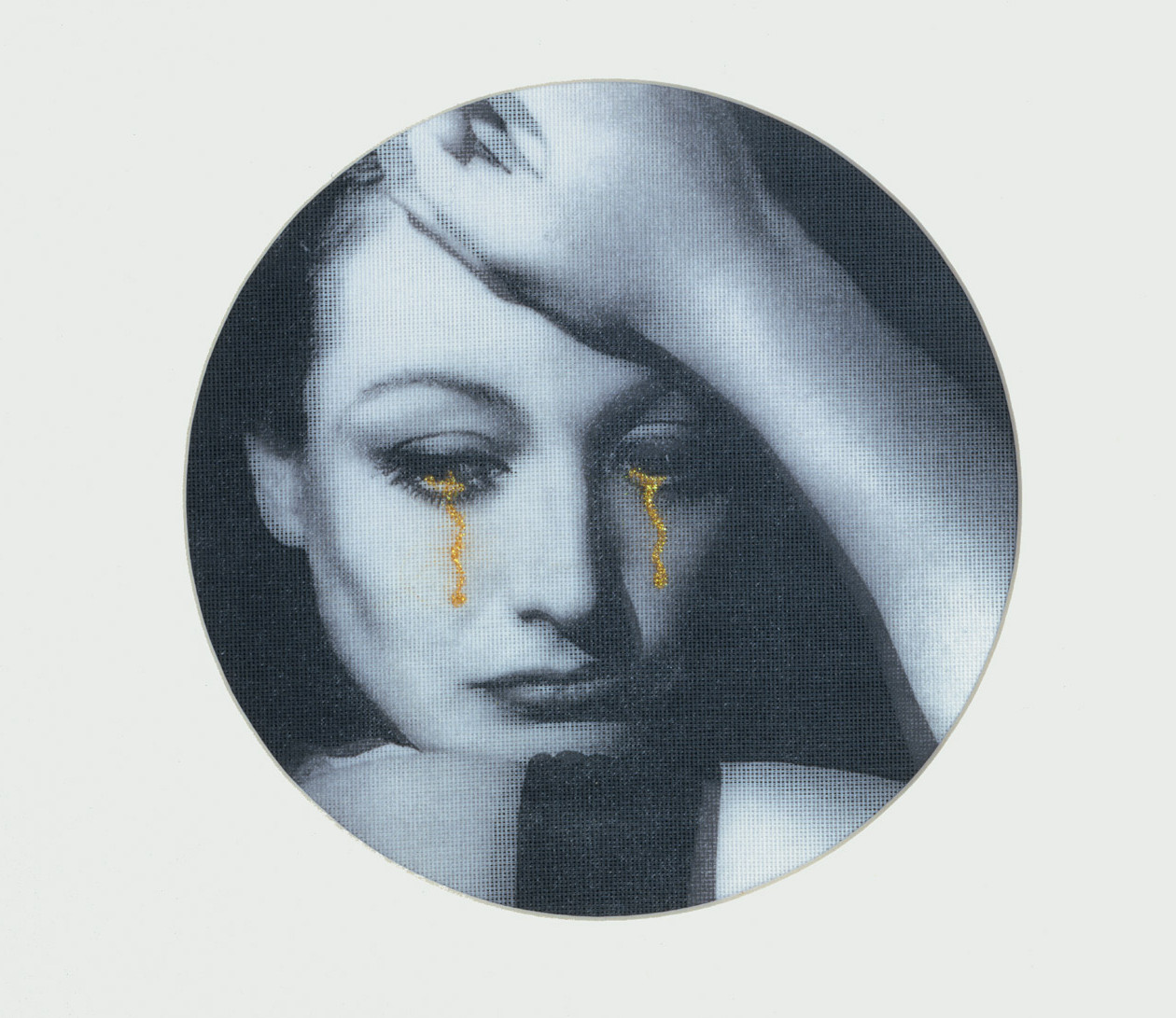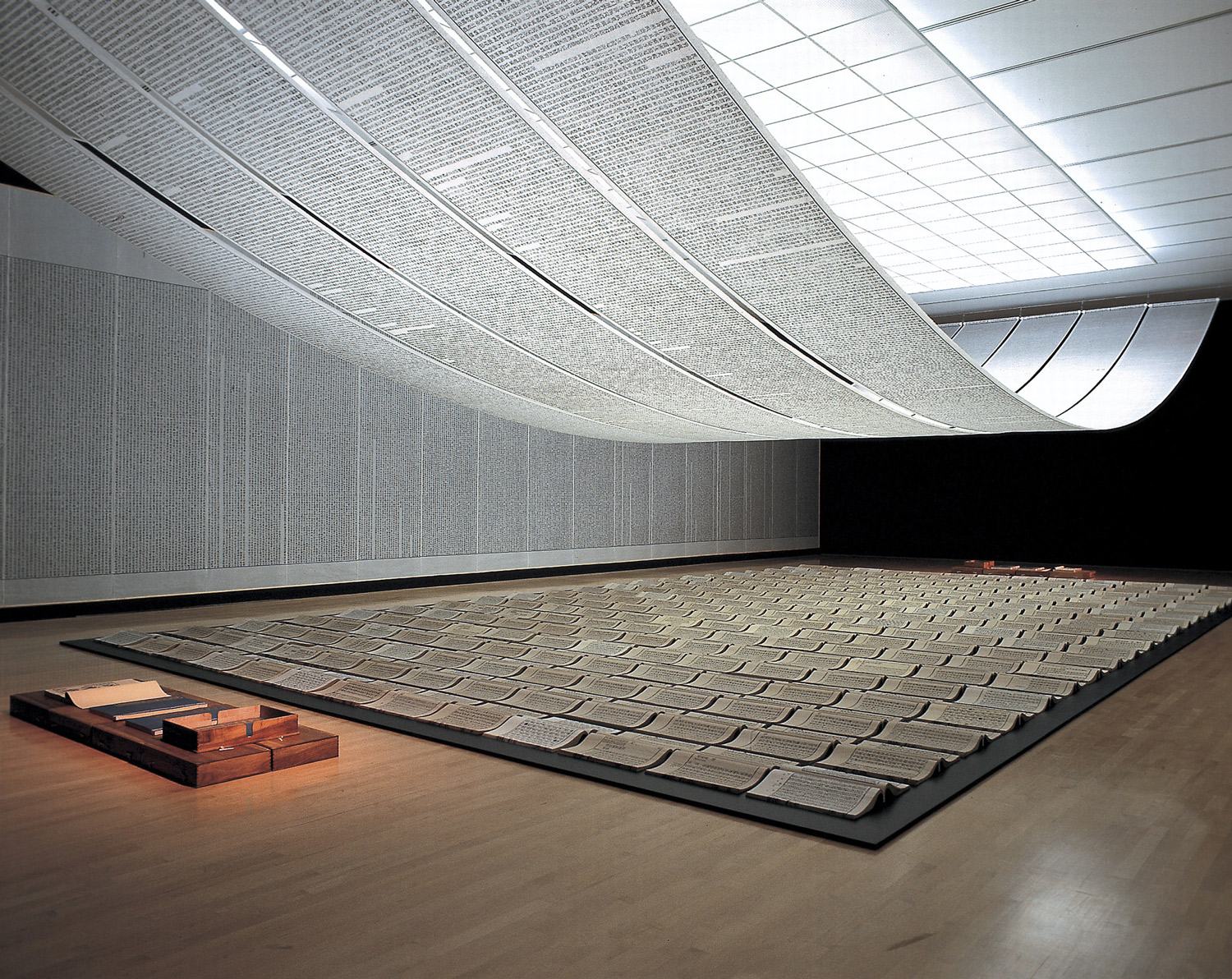
“Manifold centrefold” — the title of Jimmy Robert’s exhibition at White Light in Düsseldorf last year — could equally be used as a descriptive term for his entire work. Working in different media like collage, print, drawing, objects, video, film, performance or text, his installations materialize as multifaceted ‘spatial collages.’ The most apparent characteristic of his work is the ubiquity of paper — his preferred working material and recurrent pictorial motif. The relevance of paper in Robert’s work derives from two sources: photography and literature. Both rely on paper as the medium on which (artistic) utterances, such as pictures taken or words thought, are recorded. And both are mediated, thus translated and procedural forms of expression.
Transformations are at the core of his analysis of the relation between image and object, perhaps most apparent in his prints. Based on scanned and enlarged motifs of collages and printed out on thick paper, the collage’s original three-dimensionality is replaced by the perception of a now absent layer-created depth. Perception thus shifts between the experience of surface and dimensionality — further underpinned by the precise placement of every work: loosely hanging from the wall or spatially expanded with strips of masking tape or paper, the two-dimensional works regain factual three-dimensionality.
Muteness radiates from Robert’s work. Figures averted from the viewer in gaze or posture, their bodily parts extended or covered with layers of gauze, fabric, paper or masking tape, which prevents visual ‘contact,’ as does the closure and ‘intangibility’ of the print surface on a sensual level. These mutations and disillusionments — not seeing what one thought to see — stand for the instability that Robert attributes to images and representation. The works gathered in his show at Düsseldorf revolve around topics like models of masculine identity, as one could deduce from the juxtapositions of boxers with a dancer, military personnel and a frivolous youth. Nevertheless these connections are associative in a poetic sense rather than linear lines of argumentation. They do not allow for an unambiguous reading of meaning and content but require a constant (re)interpretation. Likewise, his works are the outcome of a circular movement of motifs and thoughts. Metallica (2007) for instance, consisting of a metal object and a performance (developed together with and performed by Swiss dancer Werner Nigg) is the result of a cycle of figuration and abstraction, fragmentation and re-contextualization. Taking its point of departure from a print showing a young man ‘dressed’ in a black skirt, Robert has extracted this central motif from the image, translated it into a fragile paper object, and then re-transformed it into a waste-high piece of metal which is reactivated as a skirt through Nigg’s performance. In Robert’s performances the body is presented as a malleable material. With bodily expressions being universally readable, but at the same time mute and thus open to interpretation, his performances clearly reference his interest in the forms and limits of communication.
The different parts of Jimmy Robert’s body of work circulate like planets around their common center of gravity: the (in the end unfulfilled) desire for communication and exchange. The closer one gets to the center, the more layers his work unveils; the stronger the force of attraction and acceleration but also the stronger the centrifugal force becomes. The center of gravity of Robert’s work can never be reached — unless you are willing to risk collapsing the entire system.





